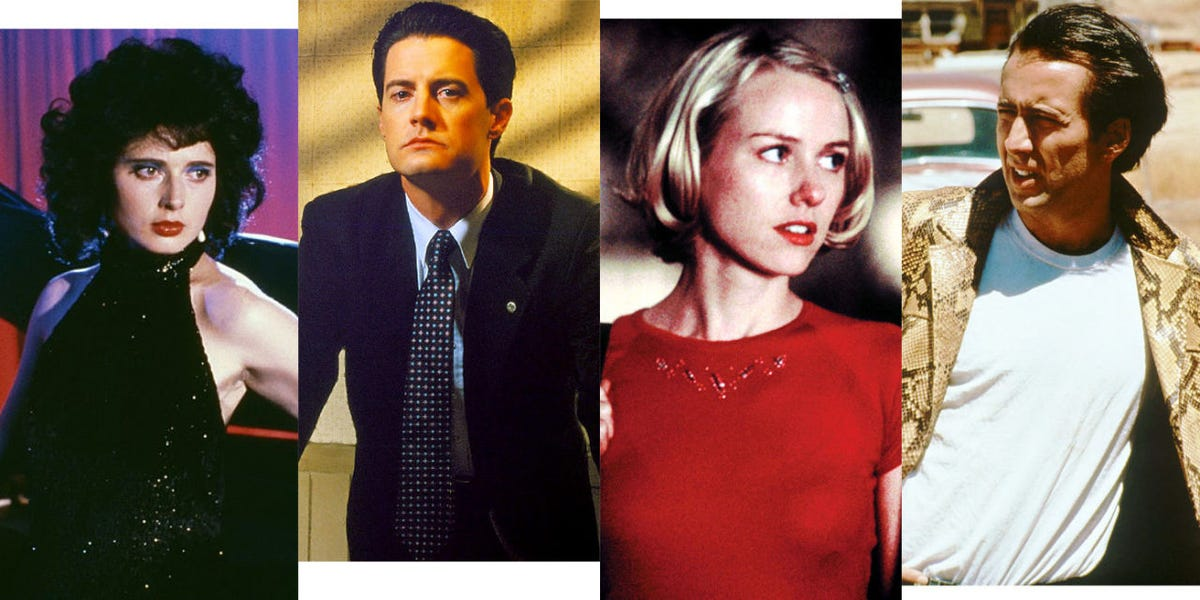David Lynch films have transcended traditional storytelling, leaving an indelible mark on cinema that continues to incite fascination and debate among viewers and critics alike. Renowned for his unique Lynchian style, films like “Blue Velvet” and “Eraserhead” explore the depths of human experience, blending the ordinary with the surreal in ways that challenge our perceptions of reality. The significance of “Twin Peaks” in the landscape of television cannot be overstated, as it introduced a level of narrative complexity that reshaped how stories are told on screen. Furthermore, rigorous analyses of his work, including insights into “Blue Velvet,” reveal a filmmaker deeply attuned to the darker undercurrents of American life. As we commemorate Lynch’s legacy, it is essential to appreciate not only his contributions to the film industry but also the profound impact his body of work has had on successive generations of storytellers.
Films by David Lynch uniquely blend visual artistry with psychological intrigue, inviting audiences into a world that dances between what is familiar and what is profoundly strange. Lynch’s cinematic creations, from the haunting atmosphere of “Eraserhead” to the narrative innovations of “Twin Peaks,” have redefined the boundaries of film and television storytelling. His works are characterized by a trademark style marked by surrealism and unexpected juxtaposition, making them ripe for analysis and discussion. In the realm of cinema, “Blue Velvet” stands as a landmark piece that exposes the darker sides of suburban America, a theme echoed throughout Lynch’s diverse filmography. Exploring Lynch’s artistic journey unveils not just his significant career but also the broader impact of his visionary approach on both audiences and filmmakers alike.
The Legacy of David Lynch’s Films
David Lynch has left an indelible mark on the film industry, shaping a unique narrative style that resonates across generations. His films, known for their surrealism and psychological depth, often blur the boundaries between reality and illusion. Classics like “Mulholland Drive” and “Blue Velvet” not only challenge viewers’ perceptions but also redefine genre expectations, creating a space where discomfort and beauty coexist. The posthumous recognition of Lynch’s work reflects a growing appreciation for his innovative cinematic language, which taps into the unconscious mind and explores the complexities of human emotion.
Moreover, Lynch’s impact is felt not only in feature films but also in television, with “Twin Peaks” revolutionizing the small screen. The show’s intricate storytelling and atmospheric tension paved the way for future series to embrace complex narratives. Lynch’s films and his contributions to television underscore his exceptional ability to engage audiences through narratives that exist in a hauntingly familiar yet unsettling realm. Films screening at events like the Harvard Film Archive serve as a testament to his enduring influence on cinema and our collective appreciation for the art form.
Understanding the Lynchian Style
The term ‘Lynchian’ has become synonymous with surreal and enigmatic storytelling, characterized by a blend of everyday life and the bizarre. Lynch’s style is marked by striking visuals, intricate sound design, and a persistent sense of unease, often exploring themes of duality and the uncanny. With works like “Eraserhead,” Lynch invites the audience into a nightmarish reality that challenges conventional cinematic storytelling, making each film an immersive experience. This unmistakable aesthetic is carefully crafted through a combination of symbols, narrative ambiguity, and sensory engagement, making his films rich for analysis and interpretation.
Critics often delve into Lynch’s use of dream logic and symbolism, as seen vividly in films like “Blue Velvet.” The contrast between idyllic small-town life and dark undercurrents reveals the complexities of the American experience. Lynch draws viewers into a world where the mundane collides with the surreal, evoking a palpable tension that resonates on an emotional level. His ability to articulate the bizarre through a visually arresting narrative structure has influenced countless filmmakers and continues to provoke deep discourse among cinema enthusiasts.
Twin Peaks: A Television Revolution
“Twin Peaks” remains a landmark in television history, known for its unconventional narrative and distinctive style that influenced a myriad of shows that followed. Lynch, alongside co-creator Mark Frost, crafted a series that blurred the lines between genres, combining soap opera elements with mystery, horror, and surreal humor. Its impact is evident in the way television has evolved to embrace cinematic techniques, with many contemporary series looking to capture the same magic that made “Twin Peaks” a cultural phenomenon.
The significance of “Twin Peaks” extends beyond its narrative complexities; it also revitalized interest in the potential of television as a serious art form. Through elaborate character development and a richly constructed world, Lynch created a loyal fan base that continues to dissect and celebrate the show’s layers of symbolism and thematic depth. The series not only enhanced the medium’s storytelling capabilities but also inspired a generation of writers and directors to push the boundaries of television, culminating in an era where complex narratives thrive.
Analyzing Blue Velvet: A Cinematic Masterpiece
“Blue Velvet” is often hailed as one of David Lynch’s most significant works, encapsulating his unique ability to intertwine beauty with horror. The film’s exploration of the darkness lurking beneath the facade of small-town America is a testament to Lynch’s skill in creating compelling narratives that challenge societal norms. It serves as a case study in psychoanalytic film theory, delving into the complexities of desire, trauma, and the human psyche. Lynch’s deliberate use of juxtaposition – the idyllic innocence of suburbia against the backdrop of violent and disturbing realities – forces viewers to confront uncomfortable truths about humanity.
The film’s cinematography, enhanced by its rich color palette and meticulous sound design, heightens the sense of dislocation and unease that Lynch is known for. It is a masterclass in tonal shifts, where moments of serene beauty are often undercut by shocking violence. As such, “Blue Velvet” invites extensive analysis, encouraging audiences to probe the deeper meanings of its narrative elements and the cultural commentary embedded within. This film not only shaped Lynch’s career but also established a template for exploring dark themes within seemingly benign settings.
The Influence of Eraserhead on Experimental Cinema
“Eraserhead,” Lynch’s debut feature, set the stage for his iconic standing in the realm of experimental cinema. The film, with its stylized black-and-white aesthetic and avant-garde narrative structure, stands apart from traditional storytelling. Its exploration of anxiety, fatherhood, and industrialism creates a visceral experience for the viewer, touching on existential themes that resonate on a personal and universal level. Lynch’s bold visionary approach in “Eraserhead” serves as a precursor to many avant-garde films, illustrating the power of visual imagery over conventional dialogue.
Moreover, the film’s impact reaches beyond its release period, influencing future filmmakers to explore the boundaries of the film medium. Lynch’s ability to utilize sound and visual elements to evoke emotions has inspired many to experiment with their own narratives, embracing the surreal as a legitimate storytelling approach. The ongoing screenings of “Eraserhead” remind audiences of Lynch’s unparalleled contribution to film, igniting discussions about its complexities and the profound implications it carries in the landscape of cinema.
Reassessing David Lynch’s Work in Contemporary Cinema
With Lynch’s passing, there emerges an opportunity for critics and audiences alike to reassess his extensive body of work. His films have continuously invited analysis and conversation, shaping the discourse around modern filmmaking and the art of storytelling. The recent resurgence of interest in his films, heightened by events like screenings at Harvard Film Archive, emphasizes how his artistic vision continues to engage viewers and inspire new interpretations. As we reflect on Lynch’s career, it’s essential to recognize the profound questions his films raise about identity, voyeurism, and the nuances of reality.
In contemporary cinema, Lynch’s influence remains palpable, with many filmmakers citing him as a major inspiration. His ability to blend the surreal with the quotidian has encouraged a reevaluation of narrative structures, urging directors to embrace ambiguity and complexity. Analyzing his films in the context of today’s cinematic landscape invites not only nostalgia but also an exciting opportunity to explore how Lynch’s innovative styles can inform the future of storytelling in film.
The Craft of a Visionary: Lynch’s Artistic Process and Philosophy
David Lynch’s artistic journey is as captivating as his films, showcasing a creator deeply invested in the intersection of art and personal expression. Lynch approaches filmmaking with a painter’s sensibility; this blend allows him to construct cinematic worlds that echo his unique vision. His process often involves a deep immersion into the subconscious, using dreams and personal experiences to inform his storytelling. This philosophy of artistic authenticity resonates through all his works, where the dreamlike qualities serve not just aesthetic purposes but also embody his intrinsic worldview.
Furthermore, Lynch’s creativity extends beyond filmmaking; he is also an accomplished painter, musician, and writer, all of which contribute to his multifaceted artistry. This versatility enhances his cinematic language, allowing him to explore themes across various mediums. As we examine Lynch’s artistic philosophy, we come to appreciate how each film, including iconic works like “Blue Velvet” and “Twin Peaks,” is not merely a standalone product but interconnected pieces of a larger narrative that are reflections of Lynch’s psyche.
The Relevance of Lynchian Themes in Modern Society
The themes explored in Lynch’s films remain incredibly relevant in our current social landscape, particularly his examinations of duality and the nature of reality. In an age marked by digital fragmentation and an overabundance of information, Lynch’s narratives of disillusionment and the darker aspects of human nature resonate strongly. As society grapples with issues of identity, privacy, and the human condition, Lynch’s ability to weave intricate psychological layers into his storytelling offers profound commentary on contemporary issues.
Moreover, viewers continue to find solace and connection in Lynch’s work as it reflects their anxieties and fears, capturing the essence of human experience in all its complexity. The ongoing discourse around Lynchian motifs emphasizes the timeless nature of his art, applied to both personal and collective consciousness. As audiences engage with his work, there is an emerging recognition of the need to confront these realities, making Lynch’s films not just a reflection of the past but a compelling lens through which to view present and future societal challenges.
Embracing the Unfamiliar: Film Screenings and Their Importance
Screenings of Lynch’s films, especially in formats like 35 mm, invite audiences to engage deeply with his work. Viewing films on the big screen fosters a communal experience, allowing viewers to share in the emotional journey together. The visceral nature of Lynch’s cinematography is most appreciated in a theater setting, where the power of sound and visuals can be fully experienced. Each screening not only serves as a tribute to Lynch’s legacy but also educates new audiences about the significance of his artistic choices.
Additionally, film screenings often catalyze discussions about the broader implications of storytelling in cinema. Events featuring Lynch’s films encourage audiences to explore deeper themes and take away new perspectives, enriching their understanding of both the film itself and the socio-cultural contexts it addresses. This collective engagement can inspire a new generation of filmmakers to embrace Lynch’s spirit of creative exploration, ensuring that his innovative vision continues to influence the landscape of cinema for years to come.
Frequently Asked Questions
What makes David Lynch’s films like ‘Blue Velvet’ and ‘Eraserhead’ significant in his career?
David Lynch’s films, such as ‘Blue Velvet’ and ‘Eraserhead,’ are significant because they embody his unique ‘Lynchian style,’ which blends the familiar and strange. ‘Blue Velvet’ explores the darkness beneath seemingly idyllic small-town life, a theme recurrent in Lynch’s work, while ‘Eraserhead’ showcases his early experiments with surreal imagery and sound design, contributing to his status as a visionary filmmaker.
How does ‘Twin Peaks’ contribute to David Lynch’s legacy in television?
‘Twin Peaks’ is pivotal in David Lynch’s career as it revolutionized television storytelling by introducing complex narrative structures, character depth, and cinematic aesthetics. The show’s exploration of the uncanny and its intricate mysteries set a new standard for serialized storytelling, solidifying Lynch’s influence on both television and film.
What elements define the ‘Lynchian style’ in films like ‘Blue Velvet’ and ‘Mulholland Drive’?
The ‘Lynchian style’ is characterized by its use of surrealism, unsettling ambiance, and thematic exploration of duality, exemplified in films like ‘Blue Velvet’ and ‘Mulholland Drive.’ Lynch’s work often juxtaposes beauty and horror, forcing viewers to confront uncomfortable truths about human nature and society.
What can audiences expect from screenings of ‘Eraserhead’ and ‘Fire Walk With Me’?
Audiences can expect a transformative experience when screening ‘Eraserhead’ and ‘Fire Walk With Me,’ as these films are best appreciated on the big screen. The intricate visuals and soundscapes typical of Lynch’s work, including the rich textures of ‘Eraserhead,’ create an immersive atmosphere that engages viewers on a deep level.
How did David Lynch’s early work influence his later films?
David Lynch’s early work, particularly ‘Eraserhead,’ laid the foundation for his later films by establishing his distinct narrative style and thematic concerns. The surreal and dreamlike quality found in ‘Eraserhead’ can be seen in later projects like ‘Twin Peaks,’ showcasing Lynch’s continuous exploration of the subconscious and the bizarre dualities of existence.
What themes are prevalent in David Lynch’s films like ‘Blue Velvet’?
Themes of duality, the nature of reality, and the grotesque coexist in David Lynch’s films, particularly in ‘Blue Velvet.’ This film reveals the juxtaposition between the idyllic facade of suburban life and the dark, violent undercurrents that lie beneath, a recurrent motif in Lynch’s exploration of the American psyche.
In what way does ‘Twin Peaks’ challenge traditional television narrative?
‘Twin Peaks’ challenges traditional television narrative by incorporating elements typically reserved for film, such as nonlinear storytelling, in-depth character development, and a surreal atmosphere. Lynch’s approach transformed viewers’ expectations and paved the way for more artistic, cinema-like series in television history.
Why is it essential to see David Lynch’s films like ‘Eraserhead’ in a theater setting?
Watching David Lynch’s films like ‘Eraserhead’ in a theater setting is essential due to the films’ unique visual and auditory experiences, which are amplified on the big screen. The collective audience experience enhances the emotional impact and allows viewers to fully immerse themselves in the uncanny atmosphere that defines Lynch’s work.
What impact has David Lynch had on contemporary filmmakers?
David Lynch’s impact on contemporary filmmakers is profound, as his innovative storytelling techniques, visual style, and thematic explorations of the human psyche have inspired a generation of artists. Filmmakers often cite his work as a source of motivation to pursue bold narratives and push the boundaries of conventional storytelling.
How has David Lynch’s work been reassessed after his passing?
After David Lynch’s passing, his work has undergone a reassessment, emphasizing his contributions to both film and television. Critics and audiences alike are reflecting on his legacy, exploring the depth and complexity of films like ‘Blue Velvet’ and series like ‘Twin Peaks,’ ensuring that his unique vision continues to resonate with future generations.
| Key Points |
|---|
| David Lynch, a legendary filmmaker, passed away, leaving a significant impact on cinema, particularly through films like ‘Blue Velvet’ and ‘Mulholland Drive’. |
| His work is characterized by a blend of beauty and darkness, resulting in deeply resonant narratives that appeal to both younger and older audiences. |
| Lynch’s films challenge traditional storytelling conventions, often exploring themes of the uncanny, where the familiar becomes strange. |
| The Harvard Film Archive is commemorating his legacy with screenings of three influential films, showcasing the importance of his cinematic language. |
| Lynch is celebrated not only for his films but also for his impact on television, notably with ‘Twin Peaks’, which introduced complex narratives to the medium. |
| The term ‘Lynchian’ has been coined to describe his unique style, highlighting his ability to create a distinctive world within his films. |
| Lynch’s cinematic approach blends his artistic background in painting and sculpture, allowing him to craft immersive narrative experiences. |
| The screenings of Lynch’s films aim to inspire a reassessment of his work, ensuring that his legacy continues to influence future filmmakers. |
Summary
David Lynch films are crucial to understanding American cinema’s evolution in the late 20th and early 21st century. His unique blend of unsettling themes and captivating aesthetics has established a captivating cinematic language that resonates across generations. The enduring appeal of pieces like ‘Blue Velvet’ and ‘Twin Peaks’ illustrates Lynch’s knack for intertwining the familiar with the surreal, inviting viewers into his meticulously crafted worlds. As we reflect on his legacy, it is essential to appreciate not only his contributions but also how they will continue to shape the film industry long after his passing.



